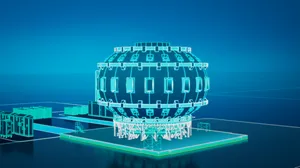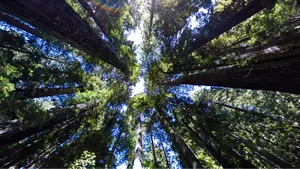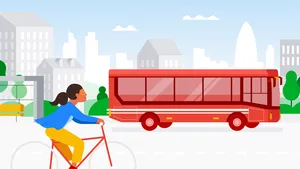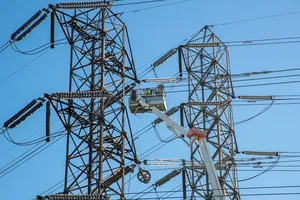A sustainable solution helped a small town cool its data center
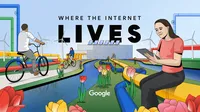
Inge van Ditshuizen grew up ice skating on the canals in the Netherlands, a joyful part of her childhood. Two winters ago, she went ice skating outside with her eight-year-old daughter. “There was just this one weekend in that year that we could ice skate,” Inge says. “And my daughter was saying, ‘Mommy, mommy, this is the first time I'm skating on the ice outside.’”
The canals rarely freeze over enough to skate on these days, a poignant reminder of climate change for Inge’s family. The Netherlands has ambitious commitments to reduce the emissions that cause climate change, aiming to operate on 100% carbon-free energy by 2050 and pursuing a range of measures to make CO2 emissions in the Netherlands 49 percent lower than in 1990 by 2030.
In line with the Netherlands climate commitments, when Google built its data center in 2016 in Eemshaven, we chose water for cooling the data center because it is more energy-efficient than air cooling, and using less energy means producing fewer emissions that cause climate change and allowing more efficient use of renewables.
A place long associated with an abundance of water, the Netherlands is now suffering from drought, another side effect of climate change. According to Inge, who is the operations manager at Google’s Eemshaven data center, drought not only affects agriculture and transportation of goods on the canals but also brings a potential for scarcity of drinking water. With this knowledge, Google partnered with the community to bring in industrial canal water to cool the data center, leaving potable water for other uses.
The water system went in before Inge started working at the data center, where she is in charge of all the systems that make the building run. But it’s the kind of innovative, community-oriented choice that makes her want to work for Google. This was not an easy project. It involved building and burying a 28-kilometer pipeline from the Eems Canal in Garmerwolde to Eemsahven.
“The really cool thing is that all these different parties worked together,” Inge says, including Google, the government and North Water, which treats the canal water so it can run through the cooling towers. The treated canal water recirculates multiple times within the data center before it is released into the nearby Wadden Sea. Google strictly monitors and controls the water quality to protect the sea, a World Heritage Site. Google has committed to improving water quality and security in the communities where we operate, and we have pledged to replenish 120% of the water we consume in all our offices and data centers by 2030.
As part of Season 3 of “Where the Internet Lives,” our podcast series about data centers, we interviewed Inge for Episode 6. We sent a film crew to Groningen to meet her, and follow the route of the water from Eemskanaal to the cooling towers at the data center and out to the sea.
You can catch up on the first half of Season 3 and subscribe now to hear the upcoming episodes of “Where the Internet Lives.”



